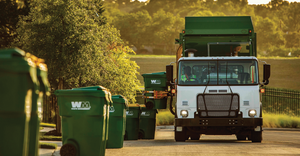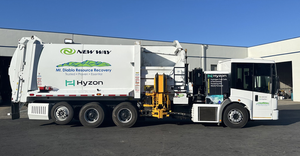BLS Figures Show Increase in Waste, Recycling Injuries, Illnesses
New figures released by the U.S. Department of Labor’s Bureau of Labor Statistics (BLS) in its 2014 Workplace Injury and Illness Data show an increase in total recordable workplace injury and illness cases for the waste and remediation sector.
The injury figures come six weeks after the most recent BLS study showed that the number of fatalities in the industry had dropped to 27 in 2014 from 33 in 2013.
In addition, the data showed a slight decrease in injuries that resulted in job transfers or job restrictions while the rate of lost workday cases was steady year-over-year.
The BLS data for the waste and remediation sector shows:
The total recordable cases of workplace injury and illness in the Waste Management and Remedial Services category was 5.1 per 100, an increase from the 2013 rate of 4.7 per 100.
The rate for cases with days away from work was 2.2 per 100, the same rate as in 2013.
The rate for cases that resulted in job transfer or restriction was 1.2 per 100, a slight decrease from the 2013 rate of 1.3 per 100.
Bret Biggers, the National Waste & Recycling Association’s (NWRA) director of statistics and standards says the total recordable cases number is similar to where it’s sat in recent years. While it rose from 2013, it’s lower than the 2012 figure of 5.4. Overall, it’s the third highest figure in the last six years.
“Lost workday cases plateaued from last year,” Biggers adds. It had risen in each of the last five years. “The good part of the data is that this number didn’t go up. … Hopefully it’s reached a peak and can start coming down.”
The job transfer or restriction number, meanwhile, has generally stayed between 1.0 and 1.4 in the last six years. The 2014 figure is right in the middle of that range.
In addition, the BLS data found that in the subcategory for solid waste collection employees within the waste and remediation category was even higher:
The total rate of recordable cases for solid waste collection employees was 7.1 per 100, up from the 2013 rate of 6.4 per 100.
The rate of cases with days away from work was 3.3 per 100, slightly up from the 2013 rate of 3.2 per 100.
The rate of cases with job transfer or restrictions was 1.5 per 100, slightly up from the 2013 rate of 1.4 per 100.
Overall, the waste management and remediation services industries reported 19,900 total recordable cases in 2014, up from 17,900 in 2013. Of the 2014 injuries, 8,600 were cases with days away from work, that is, incidents where employees were unable to work for at least a day because of the illness or injury. Additionally, 4,500 were cases with job transfer or restriction, which means the employee was able to continue working, but in a different capacity as a result of their injury or illness.
In the U.S. as a whole, there were nearly 3.0 million nonfatal workplace injuries and illnesses reported by private industry employers in 2014, according to the BLS. Injuries and illnesses occurred at a rate of 3.2 cases per 100 equivalent full-time workers. The national rate has declined 11 of the 12 past years.
Of the cases, 95.1 percent were injuries and 4.9 percent were illnesses.
Overall, private industry employers reported nearly 54,000 fewer nonfatal injury and illness cases in 2014 compared to a year earlier.
“Today’s BLS data reaffirms why our industry is committed to comprehensive approaches to safety that will save lives and reduce rates of injury,” NWRA President & CEO Sharon Kneiss said in a statement. “The private sector waste and recycling industry has been working together, across competitive lines and in the common interest, to take a holistic approach to addressing workplace safety."
Some of the efforts have included facility safety training programs, driver and collector training and awareness, according to Kneiss. The NWRA also continues to pursue efforts to have states pass "slow down to get around" legislation to help protect the industry's workers on the roads. Overall, 10 states have passed such legislation.
“The increase in the injury and illness rate for collection employees, to levels not seen since 2008. is alarming, and the high injury rate for employees at recycling facilities remains a concern," SWANA Executive Director and CEO David Biderman says. "Too many workers are getting hurt, despite the increased focus on safety at some employers and the ongoing introduction of new safety-related equipment and programs. SWANA will continue to expand the safety resources it makes available to the industry to help reduce injuries and get the waste collection industry off the federal government’s list of 10 most dangerous jobs. Nothing we do is more important.”
About the Author
You May Also Like




